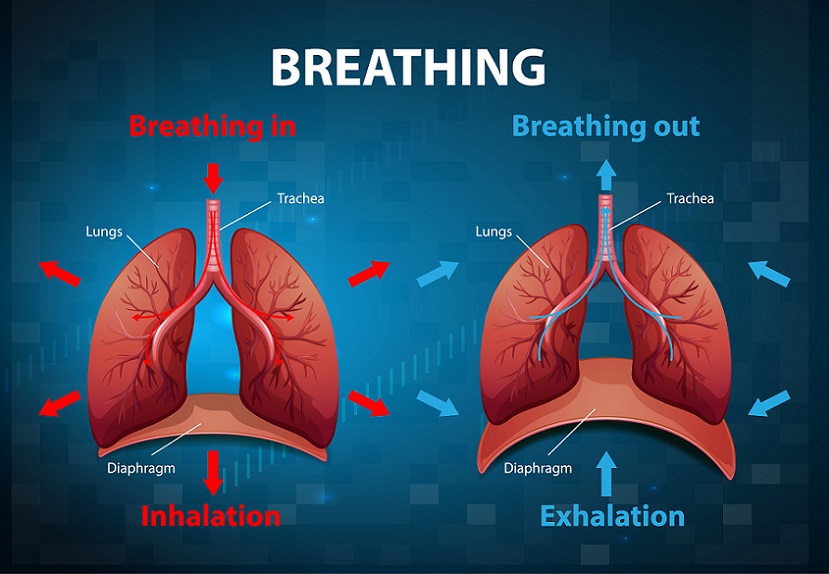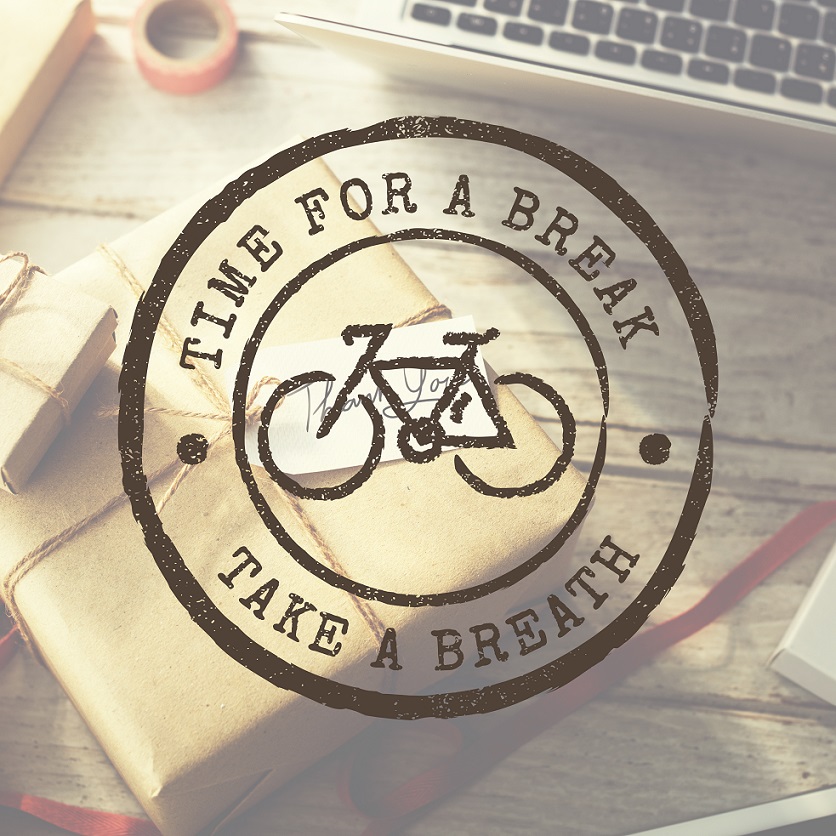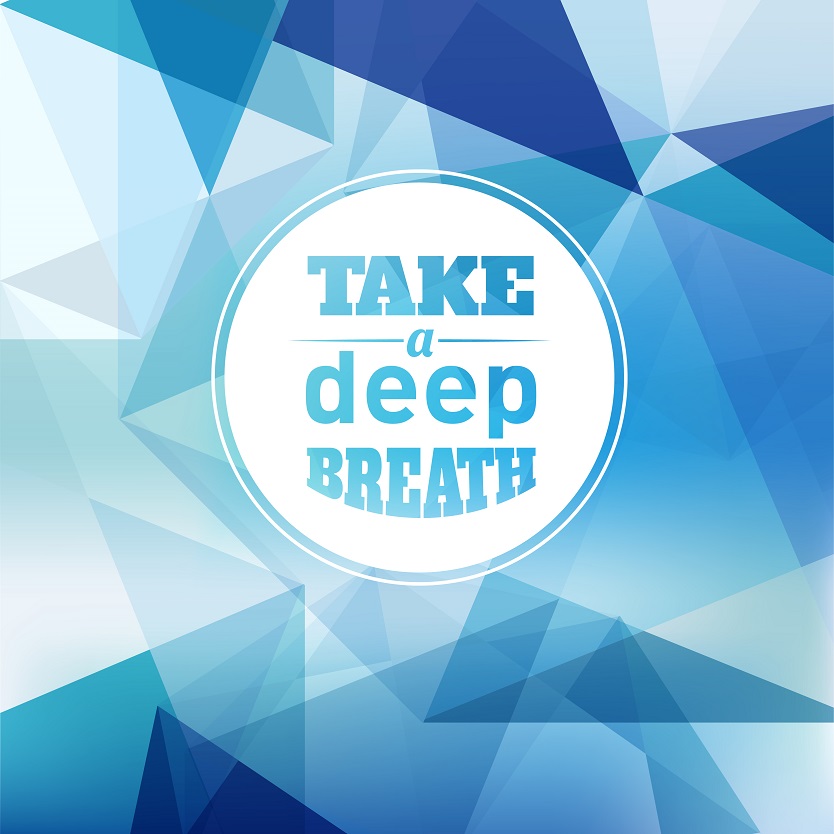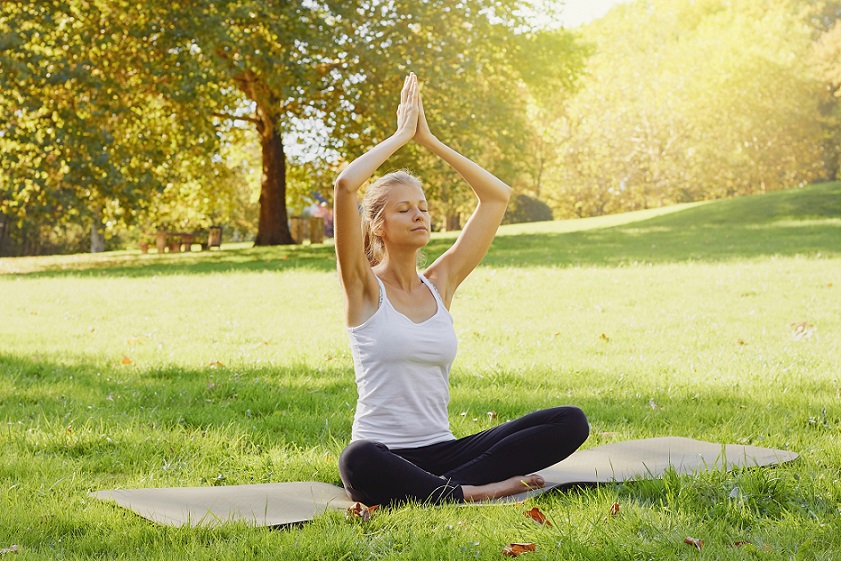Breathing Exercises To Reduce Stress?
Feeling stressed-out? Anxious? Nervous? We’ve all been there right? Try these breathing exercises to reduce stress, and help get ahold of both your mind and body!
Oftentimes, when we search the Internet for “stress relieving activities” or “natural ways to relieve anxiety”, breathing is a part of the equation.
Furthermore, “the breathe” if often the foundation to may of techniques and exercises.

“The Breathe”
For those of use who are accustomed to mindfulness-based activities such as yoga and meditation, breathing or pranayama, are ways to focus our mind and stay present.
In these instances, focused and controlled breathing is one way that’s been proven to calm our minds. Secondarily ,(depending on how you look at it) breathing techniques also have positive effects, physiologically.
According to Better Health, “abdominal breathing helps control the nervous system”. In turn, encouraging the body to relax.
Alternatively, controlled breathing has benefits such as:
- lowering blood pressure
- reducing levels of stress hormones in the blood
- balancing O2 and CO2 levels
- increasing physical functioning
Similarly, The Himalayan Institute discusses “skills for proper breathing.”
This included, nasal breathing, focusing, breathing diagrammatically, as well as ways to strengthen the diaphragm.
Fight-Or-Flight Response
The body’s fight or flight response can be stimulated in times of danger, and is a natural reaction of the body. This response causes acute anatomical changes in the body.
For instance, elevated blood pressure, elevated heart rate and increased respirations.
For example, think about a time your were driving along. All of a sudden the person in front of your slams on his/her brakes. Consequently, you then react “very quickly” by either braking yourself, or swerving out of harms way.
Simulatensouly, this situation activates your fight-or-flight response (or stress response). Briefly, your heart rate and blood pressure, most likely spike.
Likewise, in an event like this, may cause you to briefly tremble, and become tense. These reactions are activated automatically, by your flight-or-flight response.
Why Breathing Exercises?
The focus of breathing exercises that are discussed in this article, are an attempt to bring the body back to normalcy. Conversely, trying to re-balance the body.
These exercises, as we explain them, are an attempt to get in tune with yourself; physically, & emotionally, with the result of decreasing stress levels, both acutely and chronic.

Stress.org explains that proper breathing techniques not just help you “reach peak performance, but also help aid in the reduction of stress, anxiety and SOB”.
General tips and guidelines for breathing exercises, include:
- focusing on the breath in it’s entirety
- don’t force air out, let it occur naturally after inhalation
- stay relaxed
- be patient
- try different techniques
Deep Breathing (Diaphragmatic Breathing):
Seemingly fairly simple, deep breathing also takes some practice, as it may not be immediately helpful, according to UW Medicine.
Oftentimes, as a result of deep breathing, the goal is to recalibrate your breathing from shallow and irregular in nature to more “normal pattern”.
Alternatively, breathing in this pattern, can help focus your attention and lower pain.

In it’s simplest from, deep breathing, is a way to get more fresh air in your lungs on every breath.
In mindfulness practices, such as yoga and medication, it’s a way to center oneself, or stay present in the moment. Deeping breathing helps to elicit your rest-and-relax response and quiet your stress response.
With this kind of movement of air, less air is actually trapped at the end of each exhalation (Healthline).

Sama Vritti:
This form of breathing is also referred to as “equal breathing” and is a from of pranayama or yogic breathing.
What’s Pranayama?
For those of you familiar with the practice of yoga, pranayama is something you probably know well.
Pranayama in many cases, is even placed at the the top of the list, over asanas in importance. Not only does it have an effect on decreasing stress states, but yogic breathing techniques also have been researched to have positive benefits on cardiorespiratory function and physical fitness.
The meaning of pranayama can become relatively “deep”, which we’ll save for another thread. Pranayama is basically a set of breathing exercises geared toward controlling “quality, flow, and direction of vital energy in the body“.
Having said that, let’s discuss Sama Vritti pranayama.
Steps For Sama Vritti Pranayama:
- Get comfortable. Most often, you’ll see individuals sit in a cross-legged position. However, you can also do this breathing technique lying down or in a chair.
- Begin by taking a few breaths. Close your eyes and focus on inhalation and exhalation.
- Now’s where we really start to use this technique. Slowly breath in (inhaling) and count to 4.
- After, take a moment at the top of your breath to feel the air in your lungs, before slowly exhaling and counting to 4, as well.
- Just like you did at the top of the breath, take a moment and notice you empty lungs.
- Try and make your inhale and exhale pattern match as far as timing and rhythm.
- Continue this breath cycle for 3-5 minutes.
Sama Vritti Pranayama (breathing)
PMR or Progressive Relaxation Exercises:
Again with PMR, breathing is a focus of the technique and part of this controlled relaxation technique.
We’ve talked extensively about progressive muscle relaxation in another post.
Of course, the foundation behind PMR involves inhaling, tensing a specific muscle or muscle group, then exhaling while releasing that same tension.
In particular, PMR requires a systematic approach in which you either start from top-down or begin with muscles in your feet working upwards.
Pursed Lip Breathing:
One of the more common breathing techniques you may be aware of is called pursed lip breathing. One of the many ideas around reducing stress in any situation is to slow your body down, both physically and mentally.
According to Cleveland Clinic pursed lip breathing benefits us in several ways, including:
- improved ventilation (increase time = increase gas exchange)
- keeping the airways open longer
- relieving shortness of breath (SOB)
- *** causes general relaxation ***
Having said that, the idea is to deliberately slow your breathing by increasing tension on your lips.
Pursed Lip Breathing Steps:
- Relax. Do your best even prior to starting pursed lip breathing to relax your bodies muscles.
- Begin inhaling for 2-3 seconds, filling your lungs with air. Breath in through your nose.
- Prior to exhaling, pucker your lips (pursed lips). It may be easier to think of this technique as if you were about to whistle.
- Now begin to exhale through your “pursed” lips. This should be a slow exhale. Exhale for 5-6 seconds.
This breathing exercise forces you to slow your breathing. Consequently, a few things happen, like we have mentioned above.
Pursed Lip Breathing
Alternate Nostril (nose) Breathing:
Another great breathing exercise for stress is alternate nostril breathing.
Beforementioned, we discussed pranayama and it’s role in influencing the parasympathetic nervous system. Consequently, helping to return the body to a balanced state.
According to Healthline, this technique may also enhance cardiovascular function and lower heart rate.
Alternate Nostril Breathing
Alternate Nostril Breathing Steps:
- First, get into a comfortable position. As in Sami Vritti, you can begin in a cross-legged position.
- Secondly, hand placement is important. Take your pointer finger and your middle finger and press them toward the palm of your hand.
- Thirdly, take your hand and bring it up to you nose.
- Fully exhale, and then press with your thumb (on that same hand) against you right nostril, and inhale.
- Once you’ve inhaled (through your left nostril, because your thumb is pressed against the right nostril at this time) press your left nostril with the remaining fingers, your index finger and pinky, release your thumb and exhale (through your right nostril).
- Next, you’ll want to do the same with your right nostril. After you exhale fully while releasing tension on your right nostril, inhale through that same side, pressing your thumb once again on the right nostril while exhaling through the left side.
Final Thoughts!
Although some of these techniques seem rather easy to perform, they can have tremendous benefits for your mind and body.
Alternatively, there are many more breathing techniques you can try. However, we hope these give you a good starting point.
In conclusion, we hope you’ve enjoy this post and feel free to share and comment on your favorits breathing exercises for stress relief.
References:
- https://www.betterhealth.vic.gov.au/health/healthyliving/breathing-to-reduce-stress
- https://www.stress.org/how-proper-breathing-can-reduce-stress
- https://rightasrain.uwmedicine.org/mind/stress/why-deep-breathing-makes-you-feel-so-chill
- https://www.ncbi.nlm.nih.gov/pmc/articles/PMC3415184/
- https://www.healthline.com/health/breathing-exercise#pursed-lip-breathing
- https://my.clevelandclinic.org/health/articles/9443-pursed-lip-breathing
- https://greatist.com/happiness/breathing-exercises-relax
- https://www.verywellmind.com/deep-breathing-for-panic-disorder-2584061
- https://www.himalayaninstitute.org/wisdom-library/yogic-breathing-study-guide/?utm_source=adwords&utm_medium=ppc&utm_campaign=Wisdom Library & Membership&utm_term=Wisdom Library – yoga&utm_content=Learn the art of calming your mind and nervous system with yogic breathing.&gclid=Cj0KCQiArdLvBRCrARIsAGhB_szMdWmyx16KaIQST8IjeNiC4qqyYNnpdTBODQAUcw7ZbVKmfdiQ-A8aAs0IEALw_wcB.
- https://www.ncbi.nlm.nih.gov/pmc/articles/PMC3681046/




